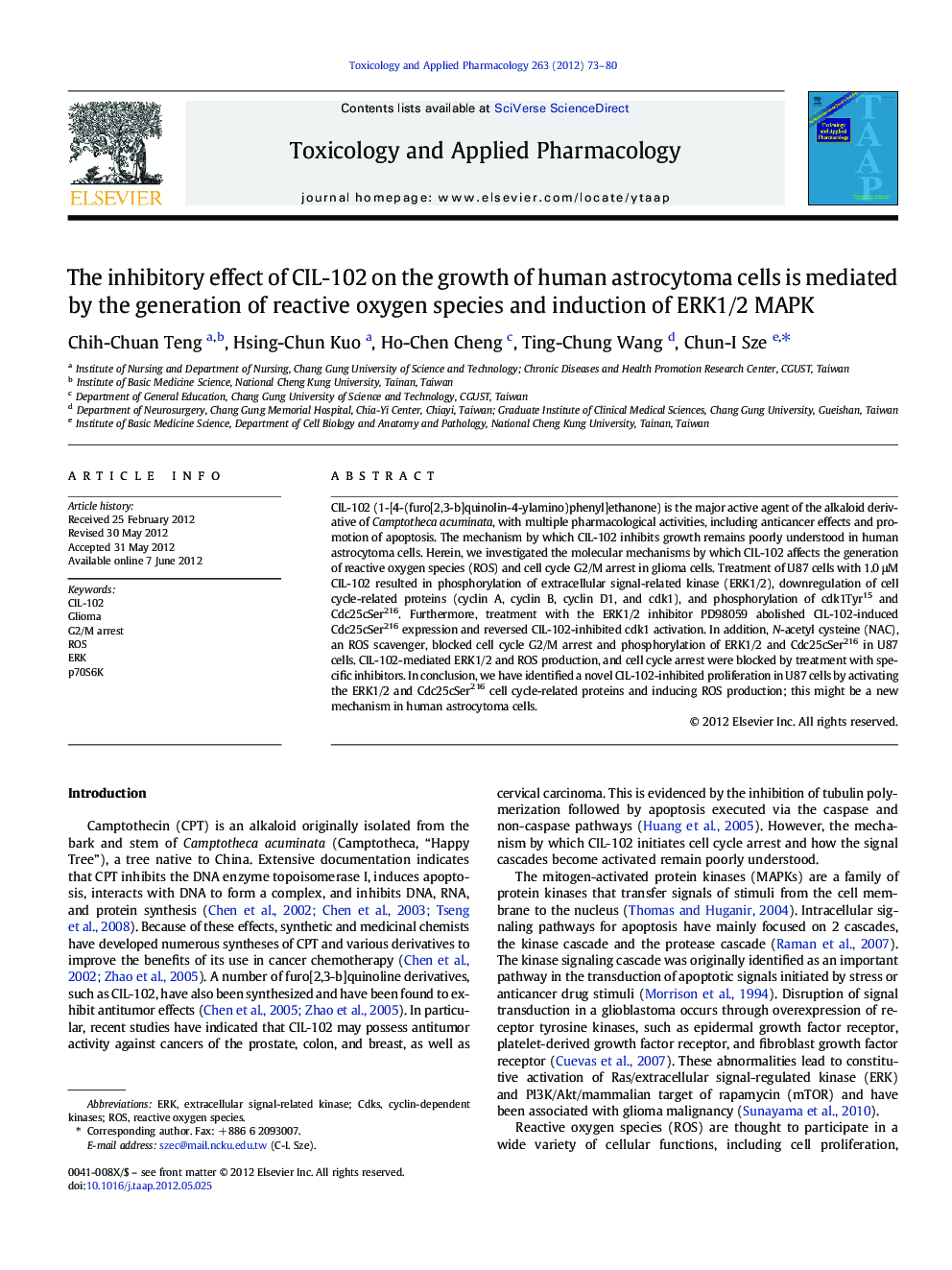| Article ID | Journal | Published Year | Pages | File Type |
|---|---|---|---|---|
| 2569270 | Toxicology and Applied Pharmacology | 2012 | 8 Pages |
CIL-102 (1-[4-(furo[2,3-b]quinolin-4-ylamino)phenyl]ethanone) is the major active agent of the alkaloid derivative of Camptotheca acuminata, with multiple pharmacological activities, including anticancer effects and promotion of apoptosis. The mechanism by which CIL-102 inhibits growth remains poorly understood in human astrocytoma cells. Herein, we investigated the molecular mechanisms by which CIL-102 affects the generation of reactive oxygen species (ROS) and cell cycle G2/M arrest in glioma cells. Treatment of U87 cells with 1.0 μM CIL-102 resulted in phosphorylation of extracellular signal-related kinase (ERK1/2), downregulation of cell cycle-related proteins (cyclin A, cyclin B, cyclin D1, and cdk1), and phosphorylation of cdk1Tyr15 and Cdc25cSer216. Furthermore, treatment with the ERK1/2 inhibitor PD98059 abolished CIL-102-induced Cdc25cSer216 expression and reversed CIL-102-inhibited cdk1 activation. In addition, N-acetyl cysteine (NAC), an ROS scavenger, blocked cell cycle G2/M arrest and phosphorylation of ERK1/2 and Cdc25cSer216 in U87 cells. CIL-102-mediated ERK1/2 and ROS production, and cell cycle arrest were blocked by treatment with specific inhibitors. In conclusion, we have identified a novel CIL-102-inhibited proliferation in U87 cells by activating the ERK1/2 and Cdc25cSer216 cell cycle-related proteins and inducing ROS production; this might be a new mechanism in human astrocytoma cells.
► We show the effects of CIL-102 on the G2/M arrest of human astrocytoma cells. ► ROS and the Ras/ERK1/2 triggering pathways are involved in the CIL-102 treatment. ► CIL-102 induces sustained activation of ERK1/2 and Cdc25c and ROS are required.
